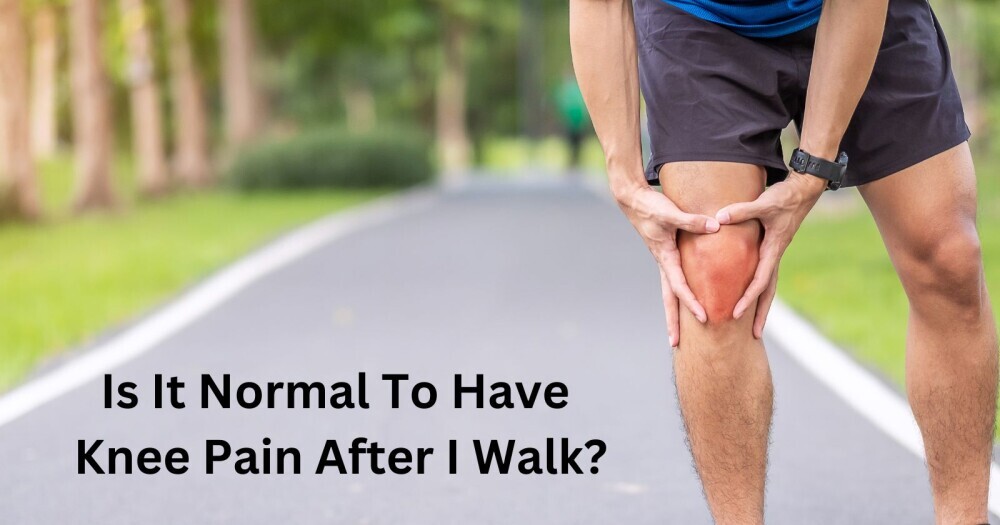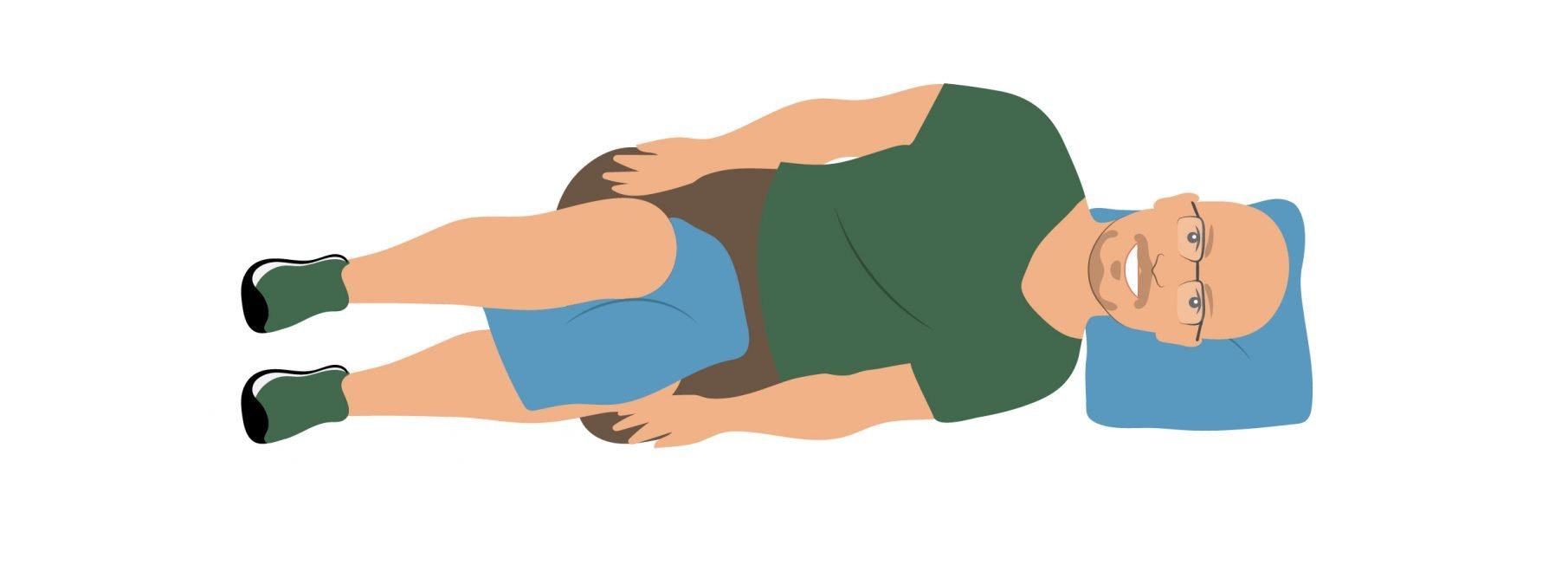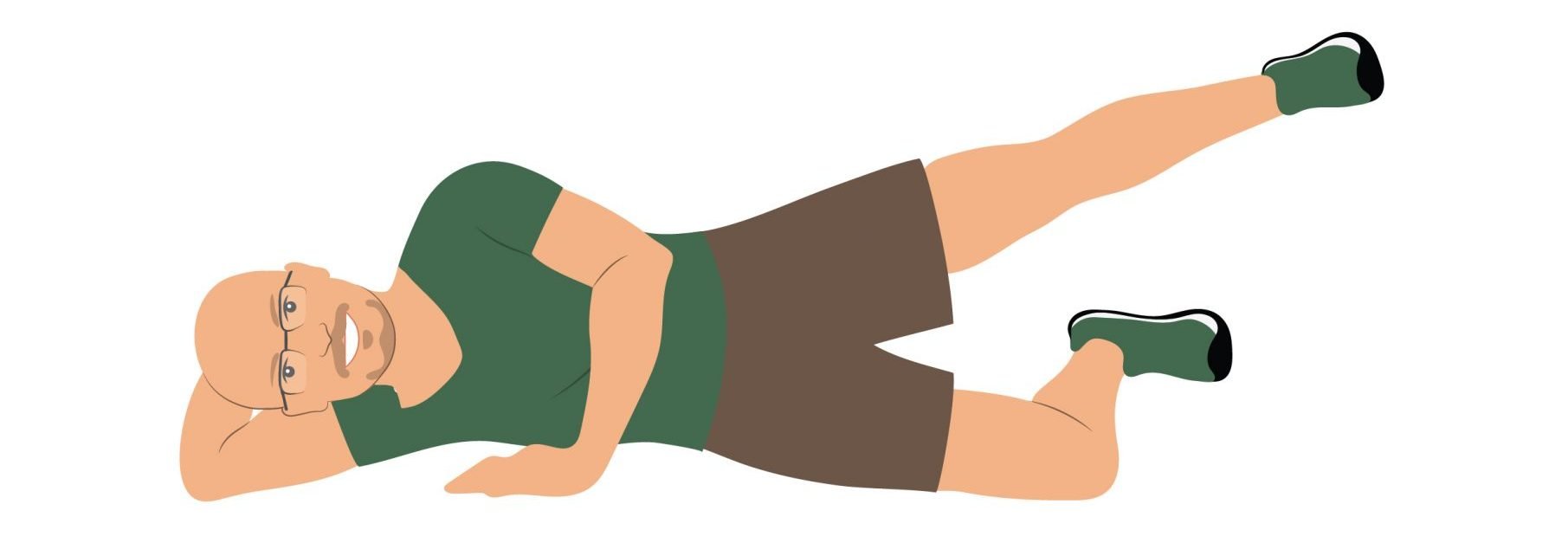“Is it normal to have knee pain after I walk?” No — but, here’s what to do with sore knees after walking, and even some exercises to do before.
This Article was Written by: Coach Todd Kuslikis
He is the creator of a wonderful program called Better Knees. You can read about it by clicking here.
If you’re ready to crash on the sofa immediately after your daily walk thanks to stiff or aching knees, it can be hard to keep up with a consistent activity schedule.
But, before jumping to medication or bombarding yourself with internet diagnoses, try reducing your knee pain when walking with simple changes to footwear, timing, and rehabilitation movements.
Occasionally, acute knee pain may require some rest to heal and reduce stress.
However, after implementing these 8 tips, you may find that chronic achiness is relieved after your daily walks.
 Should You Walk When You Have Knee Pain?
Should You Walk When You Have Knee Pain?
Your knee joint is composed of bone and cartilage. While muscles receive nourishment from the heart pumping blood (filled with everything muscles need) directly to it, cartilage doesn’t receive a nourishing blood supply. It must rely on the joint fluid for nutrition.
Moving your joints is the way to ensure your cartilage receives the nourishment it needs to stay healthy.
Walking, specifically, helps to mobilize joint fluid, lubricating the joints and providing the cartilage with those nutrients. But if you have pain after your walking workout, your body is trying to tell you something… it could be that your walking surface is too hard, your shoes are too high, or that your body wasn’t prepared for the oncoming intensity you just put it through.
What To Do With Sore Knees After Walking
If you have sore knees after walking, it’s important to take a step back and assess why they ache.
Check through these 8 tips to see where you can improve to ease walking knee pain.
Choose Softer Walking Surfaces
Walking on natural surfaces (dirt, bark dust, pea gravel) is easier on the joints. Although sometimes uneven, natural surfaces provide more balanced exercise, cushioning the joints when needed, and strengthening your joints in all planes of motion. For even surfaces, choose a cinder track or asphalt rather than concrete.*
*NOTE: mall flooring and many commercial spaces are made of primarily concrete.
Choose the Right Shoes
Walking shoes should be flat and flexible, bendable in the forefoot (toe area), and have a low heel-to-toe drop.
Having higher heels than toes, even as minimal as 1.5 inches, can increase pressure on two common sites for knee osteoarthritis damage.
Instead, opt for a heel-to-toe drop of 3/4 inch or less. Look for shoes with a wide toe box to avoid any discomfort when shifting weight during your walks.
Avoid high heels, pointy toes, and heavy shoes.
Use Cold Packs after Walking
This tip is great for those struggling with excess inflammation in their knee joints. While some inflammation is good, triggering the healing process, too much can cause unnecessary pain after walking.
You’ve done well by getting your joint fluid moving to transport nutrients into the cartilage. But, if pain persists, you can apply cold packs afterward to help reduce inflammation.
Aim for about 15 minutes or until your knee feels numb.
Use the Correct Inserts
When you have sensitive knees, common arch supports, or shoes with high arch support, only aggravate the problem. Unless you struggle with fallen arches, you don’t need high-arched shoes.
You want your foot to move as naturally as possible, by walking on natural surfaces and keeping your footwear as close to barefoot as possible. When choosing inserts for your specific needs, talk to your doctor, or podiatrist for a recommendation.
Invest in Walking Poles
If balance is an issue, it may be beneficial to invest in walking poles. Some people find that using trekking poles or Nordic walking poles helps them with stability, taking pressure off the joints and reducing joint fatigue when walking. However, there is a specific technique and goal for both trekking and Nordic walking poles, so choose wisely.
Canes and other walking aids may be useful, depending on your condition.
Walk During Low-Pain Times of the Day
If you have a lot of pain or stiffness in the morning, an intense walk isn’t the best option. Instead, simply try to get up and move around for a minute or two every half hour. This will help lubricate the joints, wake up the body, and avoid knee pain first this in the morning.
You will better enjoy long walks at a time when you have fewer aches. This will also help to keep you consistent with your daily walks.
Warm-Up Before Your Walk
This tip ties into the previous — making sure your joints are ready for whatever intensity/stress you are about to place on them. You may benefit from applying heat to your joints before you walk or walk after taking a warm shower or bath.
Start at an easy pace to get your joint fluid moving, then you can pick up your pace after a few minutes. Once your walk is done, slow back down to your starting pace to help ease your joints out of the intensity.
Add-In Knee Strengthening Exercises
Strong joints are healthy joints, and strengthening the muscles around your knees and hips helps to keep your joints strong as well! Try these 3 simple movements after you wake in the morning or before you fall asleep at night.
Leg Lifts

Lay on your back with your legs bent. Straighten out one leg and gently rotate that foot’s toes out to the side. Slowly lift up your straight leg, trying to keep that rotation the entire lift and lower (you will feel your inner thigh working).
Repeat 10 times before switching legs.
Pillow Squeezes

Roll to your side now, with one pillow under your head and another between your bent knees. Gently squeeze your knees against the pillow for 3 seconds. Relax for 5 seconds.
Repeat 10 times before rolling to the other side.
Side Leg Lifts

Stay on your side with your knees bent, only remove the pillow from between your knees. Straighten your top leg and slowly lift your leg towards the ceiling. Keep your hips and shoulders square to the wall in front of you — there may be some slight cramping in your top hip and that’s okay. Just lift the knee as far as comfortable.
Repeat 10 times before switching sides.
While it may be easier to just crash on the couch, start up some medication, or just plain quit walking, trying these 8 tips will provide more benefits, in the long run, to keep your joints happy, healthy, and active!
Help this article has helped you to find ways to relieve the pain if you have sore knees after walking.


This article provides a comprehensive guide to managing knee pain after walking, offering practical tips such as choosing softer surfaces, wearing the right shoes, and incorporating strengthening exercises. I appreciate the focus on proactive measures rather than just resting, as movement is essential for joint health. The advice on using cold packs and walking poles is particularly helpful for those with chronic knee issues.
One question I have : How can someone differentiate between normal discomfort from exercise and pain that indicates a more serious underlying condition?
I always believe that if the pain lasts more than a few weeks continuously, then it is time to get a doctors advice. It is no use trying to diagnose oneself if you have tried various methods to get rid of the pain.
I have had knee problems and I will share my experiences. Knee pain after walking can be a frustrating experience. While it is normal to feel discomfort after prolonged physical activity, persistent or severe pain may indicate an underlying problem. It is important to consider factors such as your age, general health, and the intensity of your walks. If the pain is mild and subsides quickly, it may be due to muscle fatigue or minor joint strain. However, if the pain is severe, lasts for a long time, or is accompanied by other symptoms such as swelling or redness, it is advisable to consult a healthcare professional. To relieve knee pain, incorporating stretching exercises, strengthening exercises, and maintaining a healthy weight can be beneficial. In addition, using supportive shoes and avoiding high-impact activities can help reduce stress on your knees.